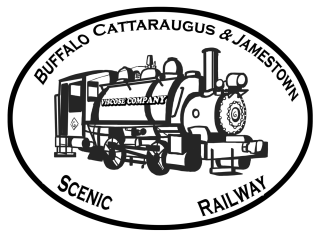Learn the Railroad History

The first plans for a railroad through the Hamburg, Eden and Collins areas goes back to 1867. The Erie Railroad had finished its line from New Jersey to Lake Erie at Dunkirk. The Atlantic and Great Western had dreams of connecting Chicago to the Atlantic Ocean. The beginnings of the New York Central System from New York to Buffalo and Chicago were well under way. The fertile valleys south of Buffalo were becoming valuable and productive farms lands.
In 1872, the Buffalo and Jamestown was incorporated to build south out of Buffalo and connect to the A&GW and Erie systems. Many prominent Buffalo businessmen invested heavily in the line. Though the rails were connected to the A&GW at Falconer by 1873, a financial panic struck. During the following depression, the railroad went bankrupt. It was reorganized as the Buffalo & Southwestern.
Buffalo had become a bigger rail and shipping port. In an effort to reach the area, the Erie purchased the B&SW in August of 1881. The line gave the Erie direct access to Buffalo and crossed under the Erie mainline to Dunkirk at Dayton via a stone arch tunnel that is still in use today. Under the Erie, stations and service was improved along the line.
The Erie Railroad was Buffalo’s third largest railroad operation during the 1920s. At one point there were four trains per day in each direction over the line. Fresh farm products left the fertile valleys for Buffalo and other cities. The passenger operations lasted until 1952, which was largely commuter traffic. A doodlebug (or self-propelled passenger coach) provided the final service between Buffalo and Jamestown. Several of the stations remained open for service into the early 1970s under the Erie-Lackawanna.
The Erie eventually merged with its nearest competitor to form the Erie-Lackawanna in 1960. Service continued to diminish, economic conditions for all railroads continued to worsen into the 1970s. Then, in 1972 hurricane Agnes hit the southern tier of New York very hard. This was the final blow for the Erie. In an effort to stop a major disaster for railroads, the Federal government stepped in to form ConRail to take over the defunct lines.
Though ConRail was formed to save the railroads at the time, the many bleeding branch lines could not be supported with small traffic levels. To help the government railroad out, permission was given to sell off or shut down many of these “unprofitable” lines, including the old B&SW. A deal was struck to trade the B&SW railroad and property to the City of Buffalo for repayment of back taxes owed by the Erie-Lackawanna. Since the City could not own property outside of its boundaries, the line ended up owned by Erie County.
The property was leased to the IDA to find an operator. In 1978, the New York and Lake Erie Railroad (NY&LE) was given an opportunity to operate the BS&W line. Federal Subsidies were received to offset the cost of running the line. After two years, the subsidies would end. The Buffalo Southern Railroad (BSOR) started operations on May 1, 1982 and has been operating the line ever since. The NYLE connects with the BSOR in Gowanda and operates the line in Cattaraugus County.
